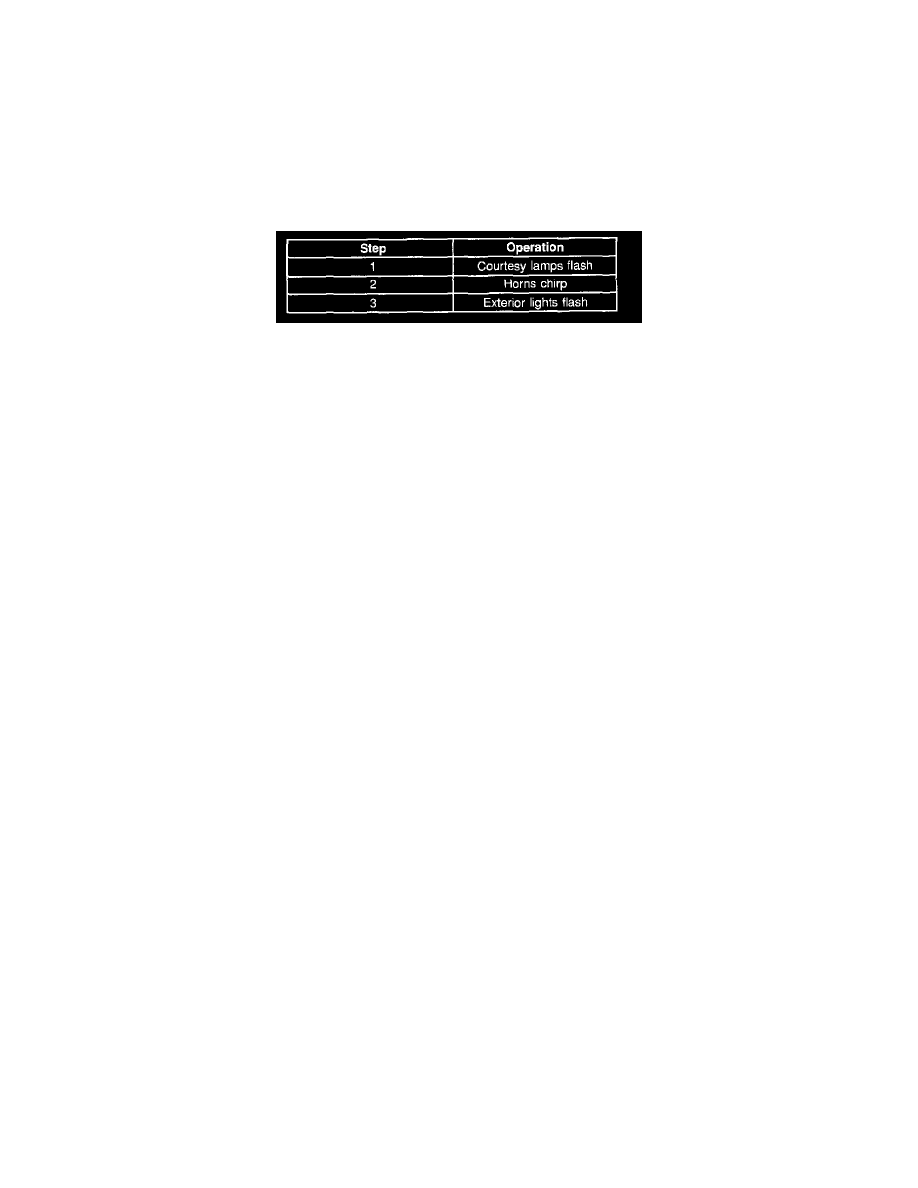Escalade V8-5.7L VIN R (2000)

Body Control Module: Reading and Clearing Diagnostic Trouble Codes
Clearing Diagnostic Trouble Codes
Current DTCs (21 to 24) are displayed as long as the BCM detects the fault to be current in the diagnostic mode. History DTCs (31 to 34) remain stored
by the body control module (BCM) until cleared. Current and history DTCs can be cleared by depressing and holding the door lock switch in the unlock
position for 4 seconds while the BCM is in the diagnostic mode. After 4 seconds, an audible warning tone will sound 3 times confirming that the DTCs
have been cleared.
Diagnostic Trouble Code (DTC) Displaying
Diagnostic Trouble Code (DTC) Displaying
ENTRY INTO DIAGNOSTICS
In the diagnostic mode, the BCM displays any diagnostic trouble codes (DTCS) that are stored in memory. The DTCs are displayed as flash codes
through the security LED indicator lamp on the console. During normal operation, it the BCM detects a fault in a monitored system, there is no flash
code to indicate to the customer that a fault has occurred. However, the driver may detect a system malfunction. System faults are stored by the BCM
as CURRENT or HISTORY DTCs. A current DTC means that a fault was present when the diagnostic mode was entered. A history DTC indicates
that the following conditions occurred:
^
A fault occurred sometime after the BCM was installed in the vehicle.
^
A fault occurred since the last time the DTCs were cleared.
^
The fault may not be currently present.
If a current DTC is stored, the associated history DTC will always be stored.
When working on systems that are controlled by the BCM, the technician should always refer to this section and check for DTCs.
Enter diagnostics by performing the following steps:
^
Turn the ignition switch to the RUN position in order to disarm the universal theft deterrent system, if equipped.
^
Turn the ignition switch to the OFF position.
^
Remove the RADIO fuse 17 from the instrument panel fuse block.
^
Turn the ignition switch to the ACC position. This action will enter the program mode. Two audible warning tones will occur for mode
verification.
^
Within 5 seconds, turn the ignition switch to the OFF position. Immediately (within one second) turn the ignition switch back to the ACC position.
This action will enter the diagnostic mode. Three audible warning tones will occur for mode verification.
The BCM will begin to flash DTCs 4 seconds after entering the diagnostic mode. Each flash of the security LED indicator lamp on the console
represents a number. For example, one flash followed by two quick flashes represents a code 12. Each code is displayed 3 times before the next code
is displayed. Stored DTCs are displayed in numerical order.
Once the last code is displayed, the list begins over again with the first code. The display continues until the diagnostic mode is exited.
While in the diagnostic mode, a transition of certain BCM inputs from active to inactive, or vice versa, will cause the BCM to actively respond. For
example, if a door lock switch is depressed the BCM will perform the following actions:
1. Flash the FASTEN SEATBELT indicator.
2. Sound a single audible warning tone.
The BCM will also respond in the same way if the rear compartment lid or a door is opened or closed. This is due to the transition at the door jamb
switch or the rear compartment lid ajar indication switch input. In all cases, the BCM will also attempt to perform the operation normally performed
by the switch transition.
The BCM will also respond to a change at either the shock sensor tamper input or the shock sensor shock input. The tamper input is activated by
minor blows to the vehicle. The shock input is activated by heavy blows to the vehicle, or by tapping on the exposed shock sensor. In the diagnostic
mode, if either the tamper input or the shock input becomes active the following actions will occur:
^
The BCM will activate the horn relay.
^
The horn relay will cause the horns to chirp.
^
The BCM will sound an audible warning tone. Any transition at the interior lamps command input while in the diagnostic mode will cause the
BCM to perform the following actions:
